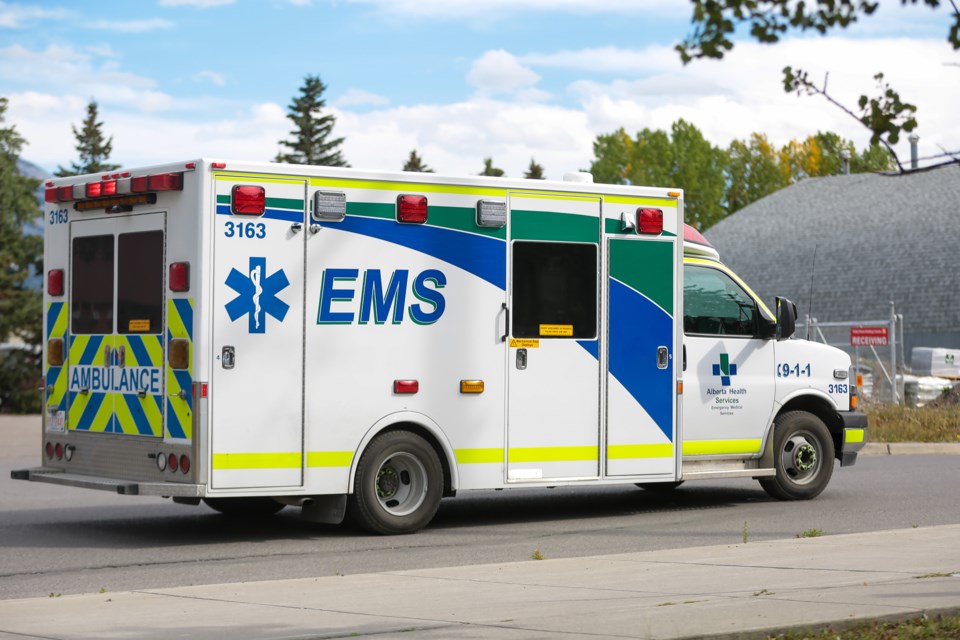KANANSKIS COUNTRY – Contrary to much of Alberta, ambulance response times in Kananaskis Country are the lowest they’ve been in at least six years.
Rob Jabs, district two operations manager of EMS operations for Alberta Health Services (AHS), said recent changes made to the way resources are deployed in the Bow Valley Corridor are “paying off in dividends” in 2022.
“We’re down to [a response time of] 14 minutes within the 50th percentile,” said Jabs during a Sept. 13 Kananaskis Improvement District (KID) council meeting. “It’s the lowest it’s ever been since we’ve been tracking the numbers.”
The 50th percentile figure means half of all fiscal year-to-date delta and echo responses – that is the most acute and time-dependent calls – have been faster than 14 minutes and half have been slower than 14 minutes.
Of all 36 valid delta and echo calls responded to since April 1, 2022, 90 per cent have taken a response time of 36 minutes or less, while the other 10 per cent took longer, according to a report before council.
Both percentile figures are under the 20-minute and 40-minute targets set by EMS for K-Country.
The biggest marker of change in the report, however, is Calgary’s absence from the list of communities assisted by K-Country’s single Advanced Life Support ambulance throughout the first quarter of 2022.
Jabs said it would be remiss not to acknowledge the impact on K-Country of a significant increase in call volume coming from the city, which draws resources from the provincial park and other nearby rural areas.
“One of the things we’ve done to mitigate some of that demand is we’re starting to triage low acuity 911 calls,” he said.
“The other issue we’ve got is prolonged hospital wait times, which has been an ongoing issue for years. It’s really starting to pop up as a big problem for us and we’ve been raising awareness within the organization to really help them understand how this is impacting our ability to respond.”
One major change to EMS response Jabs underscored is the incorporation of an integrated operation centre currently being trialed in Red Deer, supporting the AHS EMS 10-Point Plan.
The inter-facility pilot project creates a team to handle non-emergency hospital transfers, thereby freeing up ambulances for emergency calls. The team is comprised of hospital representatives, EMS and other stakeholders.
“They all sit in a room and make a determination in terms of where we can most appropriately transport a patient so they can be seen in the most time-effective manner, maintaining the ability to treat them so we’re not compromising patient care,” said Jabs.
Some of the measures appear to be working as K-Country’s one Advanced Life Support ambulance responded to just two calls in Calgary from April 1 to June 30, 2022, compared to the city taking up 38 per cent of its calls throughout the entire 2021 AHS fiscal year.
“There’s been a lot of really positive changes being made and we can see that throughout several rural communities that are now seeing a decrease in their response times,” said Jabs.
In the first quarter of 2022, 38 per cent of calls to K-Country EMS came from Stoney Nakoda, 33 per cent from Kananaskis, nine per cent from Cochrane, and six per cent from Bighorn MD.
K-Country EMS is frequently assisted by supports such as Kananaskis Emergency Services, STARS and neighbouring RCMP detachments in Canmore, Stoney Nakoda and Cochrane in its response.




